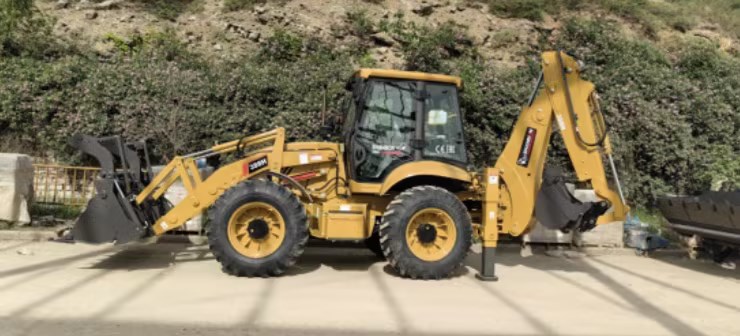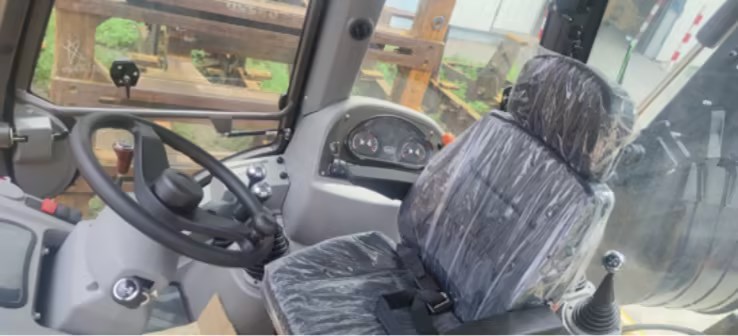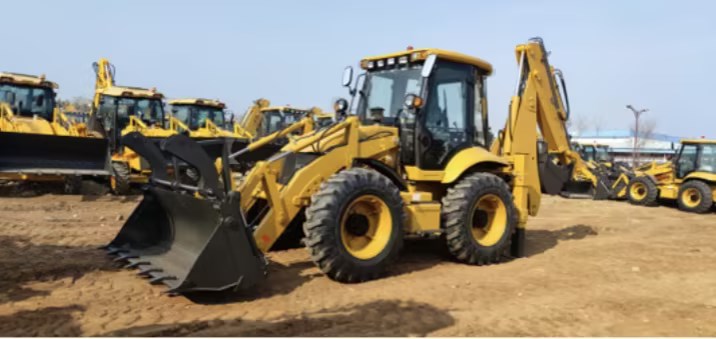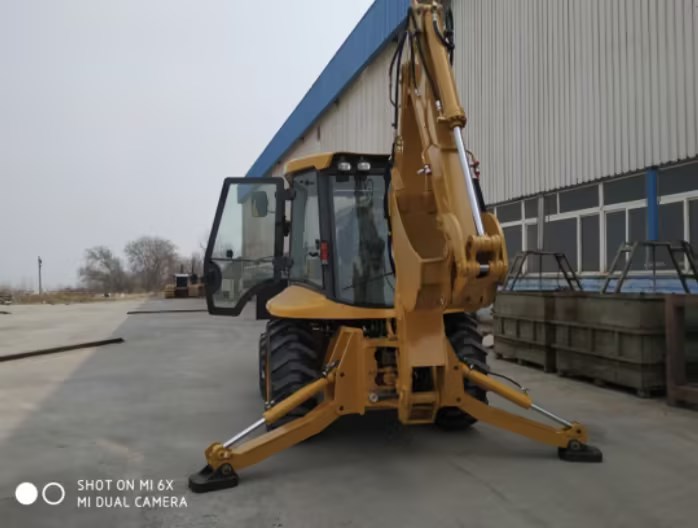Mechanical equipment mainly used for excavating ditches and channels
The excavator loader is a single device composed of three construction equipment. Commonly known as "busy at both ends". During construction, the operator only needs to rotate the seat once to change the working end. The main work of the excavator loader is to excavate ditches and channels for laying pipelines and underground cables, laying the foundation for buildings, and establishing drainage systems.
The main reason why excavators and loaders appear on all construction sites is that various projects require excavation and handling of soil. Although many other tools can also accomplish such tasks, excavators and loaders can significantly improve efficiency. Compared to large single function equipment such as tracked excavators, excavator loaders are more compact in size. And they can also move around on various construction sites, and even run on highways. Although some small loaders and excavator equipment may be smaller than excavator loaders, using excavator loaders can save a lot of time and money if contractors need to carry out both excavation and loading operations.
constituent part

SHANMON 388H
A excavator loader includes: powertrain, loading end, and excavation end. Each device is designed for a specific type of work. On a typical construction site, excavator operators typically need to use all three components to complete their work.
Powertrain
The core structure of a excavator loader is the powertrain. The powertrain design of the excavator loader allows for free running on various rugged terrains. Equipped with a powerful turbocharged diesel engine, large deep toothed tires, and a cab equipped with driving controls (steering wheel, brakes, etc.).

Loader section

Excavator loader loading end
The loader is assembled in front of the equipment, while the excavator is assembled at the back. These two components provide completely different functions. Loaders can complete various tasks. In many applications, you can consider it a powerful large dustpan or coffee spoon. It is generally not used for excavation, but mainly for picking and handling large amounts of loose materials. In addition, it can also be used to push soil like a plow, or to level the ground, just like spreading butter on bread. The operator can control the loader while driving the tractor.
Excavator section

Excavator loader excavation end
Excavators are the main tools for excavators and loaders. It can be used to excavate dense and hard materials (often soil), or to lift heavy objects (such as sewer culverts). Excavators can lift these materials and stack them on one side of the hole. Simply put, an excavator is a powerful giant arm or finger that consists of three parts: boom, stick, and bucket
Stable support feet

Stable support feet
Other additional components commonly seen on excavator loaders include the two stabilizing feet behind the rear wheels. These supports are crucial for the operation of the excavator. When the excavator performs excavation operations, the support feet can absorb the impact of weight. If there are no stable support feet, the weight of heavy loads or the downward force generated during excavation will damage the wheels and tires, and the entire tractor will continuously bounce. Stable support feet can keep the tractor stable and minimize the impact force generated by the excavator during excavation. Stable support feet can also secure the tractor, preventing it from slipping into ditches or caves.
Safe operation technology
1. Before excavating, the loader should fix the bucket mouth and support legs of the loading bucket to the ground, so that the front and rear wheels are slightly off the ground, and maintain the level of the machine body to improve the stability of the machinery. Before excavation, the loading bucket should be flipped over with the bucket mouth facing the ground, and the front wheels should be slightly off the ground. Step on and lock the brake pedal, then extend the support legs to lift the rear wheels off the ground and maintain a horizontal position. [2]
If the boom suddenly brakes during descent, the impact force caused by its inertia will damage the excavation device and can disrupt the stability of the machinery, resulting in a tipping accident. During homework, the control handle should be stable and not move sharply; Do not brake midway when lowering the boom. High gear should not be used during excavation. The rotation should be smooth and should not collide with or be used to compact the side of the groove. The buffer block at the rear end of the boom should be kept intact; If there is any damage, it should be repaired before use. When shifting, the excavation device should be in the middle transportation state, the supporting legs should be retracted, and the lifting arm should be lifted before proceeding. [2]
Before loading, the rotating mechanism of the excavation device should be placed in the middle position and fixed with a pull plate. During the loading process, low gear should be used. When lifting the bucket lifting arm, the floating position of the valve should not be used. The distribution valves of the hydraulic control system are divided into front four valves and rear four valves. The front four valves operate the support legs, lifting arms, and loading buckets, which are used for leg extension and loading operations; The rear four valves operate the bucket, swing, boom, and handle for swing and excavation operations. The power performance of machinery and the ability of hydraulic systems do not allow or make it impossible to carry out loading and excavation operations simultaneously. [2]
4. When the front four valves are working, the back four valves cannot work simultaneously. During driving or operation, personnel are strictly prohibited from riding or standing anywhere on the excavator loader except outside the driver's cab. [2]
5. Generally, excavator loaders use wheeled tractors as the main engine, with loading and excavation devices installed at the front and rear respectively, to increase the length and weight of the machinery. Therefore, high-speed or sharp turns should be avoided during driving to prevent accidents. Do not slide in neutral gear when going downhill. When the hydraulic piston rods of the bucket and handle are kept in the fully extended position, the bucket can be brought closer to the boom, and the excavation device is in a short state, which is beneficial for driving. When driving, the supporting legs should be fully retracted, the excavation device should be securely fixed, the loading device should be lowered, and the bucket and handle hydraulic piston rod should be kept in a fully extended position.
After converting a wheeled tractor into a excavator loader, the weight increase is significant to reduce tire damage under heavy loads
Injury, take measures to lift the rear wheels off the ground when parking. When the parking time exceeds, the support legs should be lifted to lift the rear wheels off the ground; When the parking time exceeds, the rear wheels should be lifted off the ground and supported with blocks under the rear suspension.

 Location:
Location: 2023-7-31
2023-7-31










 鲁公网安备37078102002311
鲁公网安备37078102002311